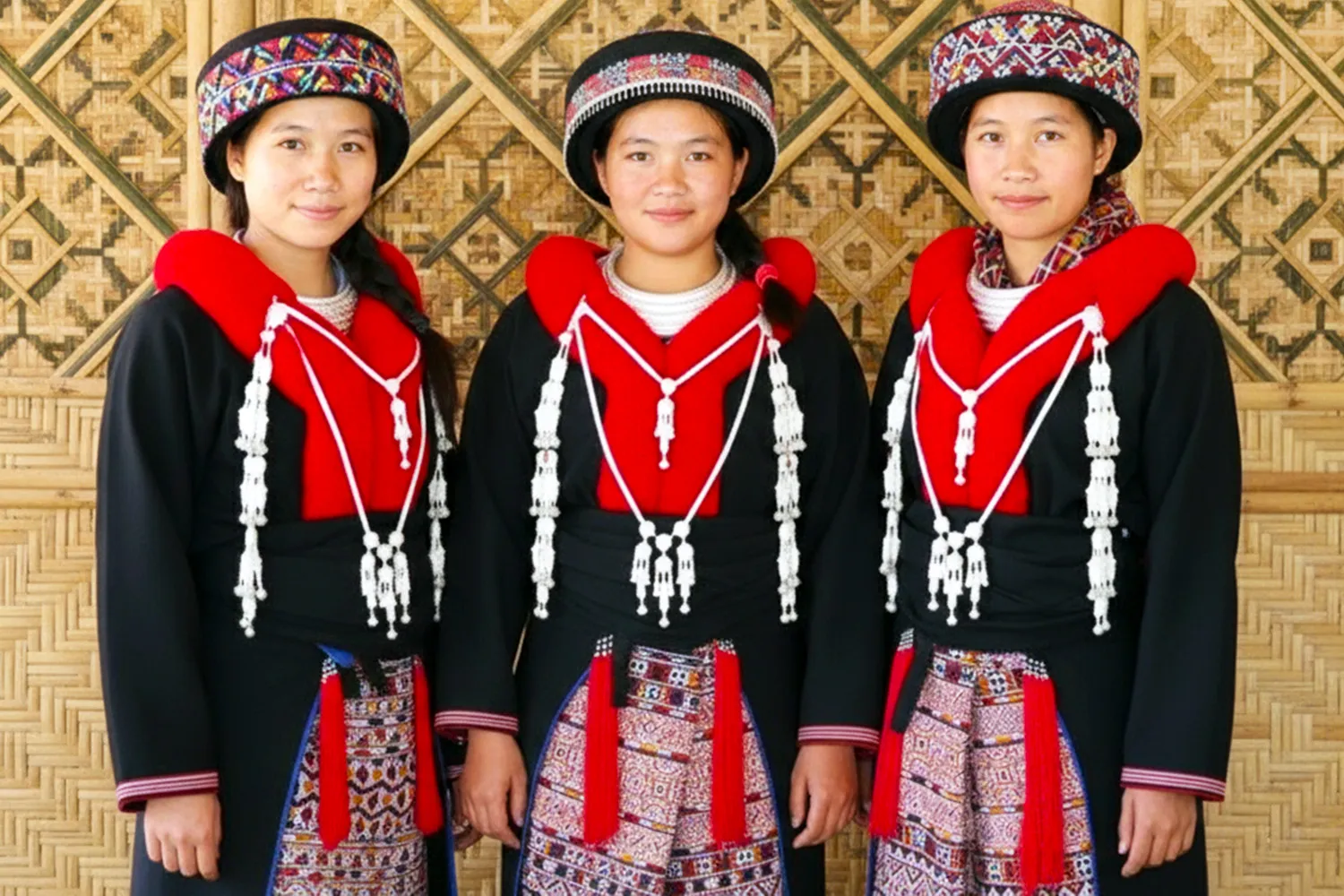Origins and Migration:
The Mien people, often referred to by their Chinese name Yao, constitute a significant ethnic minority group in the mountains of northern Thailand. Their historical origins are deeply rooted in the Hunan and Guangxi provinces of southern China, where they developed a distinctive culture heavily influenced by Taoism. The Mien experienced a centuries-long pattern of southward migration, a journey driven primarily by conflict, population pressure, and the search for new lands suitable for their traditional agricultural practices. Their movement into Southeast Asia, particularly Laos and Vietnam, occurred over several centuries, with the main waves of Mien settling in Thailand arriving from Laos during the late 19th and throughout the 20th century. Today, Mien communities are predominantly found in the remote highlands of provinces such as Chiang Rai, Phayao, Nan, and Chiang Mai. Unlike most other hill tribes, the Mien arrived with a written language and highly complex religious texts, giving them a unique cultural heritage marked by literacy and adherence to a sophisticated religious system.
Livelihood and Economic:
The traditional lifestyle and economy of the Mien were historically centered around shifting cultivation (slash-and-burn agriculture) on the mountain slopes, a practice common among highlanders. Their principal crops included upland rice and corn for subsistence. Uniquely, the Mien excelled at crafts and trade, often acting as intermediaries between other hill tribes and the lowland Thai. Historically, they also cultivated the opium poppy as a crucial cash crop, essential for their economy and trade network; however, this practice was largely phased out following the successful crop substitution programs initiated by the Thai Royal Project, which encouraged the growth of temperate fruits, vegetables, and flowers. Modern Mien communities have adapted by investing heavily in cash crop farming, such as lychees and coffee, and are renowned for their highly intricate embroidery, which generates significant income through the tourism market. Their focus on education has also led to a greater integration of Mien youth into the professional sectors of the Thai urban economy.
Spiritual Life and Social Structure:
Mien culture and religion are perhaps the most distinct among the hill tribes due to their strong historical adherence to a highly sophisticated form of Chinese Taoism, often blended with animism and ancestor worship. Their Taoist beliefs are not merely spiritual but form the basis of their social structure, moral code, and ritual life. The Mien possess written religious texts (written in Chinese characters or their own phonetic script), which are essential for ceremonies. Spiritual life is managed by highly trained priests who conduct complex rituals, often lasting days, for exorcisms, healing, and honoring ancestors. Ancestor worship is central, with a large, dedicated altar occupying a prominent space in every home. The Mien social structure is strictly patrilineal, organized around extended families and clans, which dictates rules for marriage (which must be exogamous) and provides a powerful support network. They place a high value on literacy (for religious purposes) and traditional education, reinforcing their strong cultural identity.
Traditional Dress and Symbolism:
The traditional clothing of the Mien is famous for its intricate design and spectacular level of craftsmanship, serving as a powerful visual marker of their cultural identity. The most recognizable element is the deep indigo or black tunic and trousers worn by women, which are elaborately adorned with vast panels of vibrant red wool or synthetic yarn around the collar, cuffs, and trouser hems. This red trimming is often referred to as the “flame” and is meticulously stitched on. The Mien are celebrated for their exquisite embroidery, which utilizes cross-stitch and appliqué techniques to create complex geometric and symbolic patterns on their garments. Mien women also wear a distinctive turban of dark cloth, sometimes decorated with small silver ornaments. Mien men wear simple black jackets and loose trousers, but for ceremonies, they wear elaborate embroidered jackets, sashes, and often carry a distinctive crescent-shaped silver necklace—a sign of wealth and protection—which is passed down through generations.
Village Architecture and Layout:
Mien village structure and house construction generally reflect their large, extended family units and their need for a secure home for their spiritual activities. Mien villages are typically built at moderate to high altitudes on mountain slopes. Their traditional homes are built directly on the ground with sturdy wooden frames and walls made of planks, often featuring an earthen floor. This ground-level style, similar to that of the Hmong, helps insulate the interior against the cold. The most important feature of the interior is the ancestor altar and the main ceremonial altar for Taoist rituals, which are meticulously maintained and treated with reverence. The house layout is designed to accommodate the extended family, with separate areas for sleeping and living, but always ensuring the sanctity of the spiritual spaces. Villages tend to be permanent, with homes designed for longevity. In modern times, while building materials have updated to include concrete and metal roofing, the internal layout and the central placement of the spiritual altars remain crucial for maintaining the Mien Way of life.
Festivals and Ceremonial Life:
The Mien cultural year is marked by several highly ritualistic festivals and ceremonies, all of which are deeply connected to their Taoist and ancestral beliefs. The most important celebration is the Mien New Year, which follows the Chinese Lunar calendar (usually in January or February). This festival is a time for family reunions, elaborate feasting, ancestor honoring, and spiritual renewal. Central to the New Year are the complex Taoist rites performed by the village priests, involving the reading of sacred texts and the making of offerings. Another significant, though less frequent, ceremony is the ‘Passage to Manhood’ (Gwot Ndaang or Initiation Ceremony), a life-cycle event where young men are formally initiated into the Taoist priesthood, allowing them to perform complex rituals and read the sacred texts—a fundamental step for any Mien male. These events, rich with music, traditional clothing, and intricate religious protocols, are essential for reinforcing social cohesion and ensuring the continuity of their ancient traditions.

